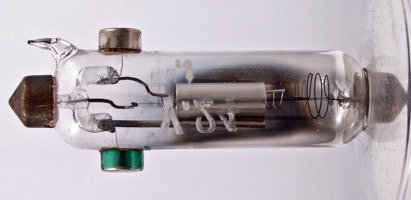More grids, more grids…

The early vacuum tubes exhibited very high levels of anode-grid capacitance. It was therefore very difficult to prevent the circuits that used them from bursting into oscillation. This was especially true when they were used at frequencies above a hundred kilohertz. Several attempts were made to overcome the problem.
One major milestone in the history of vacuum tubes was set by H. J. Round. In 1916 he produced a low capacitance valve known as the Type V24.
For this tube, Round had the idea of keeping the anode lead away from the grid by passing it out of the top of the glass envelope and not through the base at the bottom. Whilst this gave a significant improvement, it was not the complete answer.
The solution to the problem was discovered in 1926 by adding a further grid. Known as the tetrode this vacuum tube used a second grid called the “screen grid” between the first or “control grid” and the anode. Its introduction reduced the anode to control grid capacitance to almost zero and solved the problem of instability.
Then in 1929 the tetrode itself was improved by the introduction of another type of vacuum tube termed the pentode. This tube had a total of five electrodes, the additional one being a third grid called the suppressor grid. This overcame the problem encountered with the tetrode of a discontinuity in its characteristic caused by electrons bouncing off the anode.
Apart from making changes in the operation of valves by adding additional grids, further improvements were made in the heater arrangements. One of the main problems with early tubes was that the circuit configurations were limited because the heater and cathode were one and the same. It was discovered that the cathode could be indirectly heated. This meant that the heater could be electrically isolated from the cathode. The advantage was that the heater did not need to be run from a battery supplying DC. Instead an AC supply derived from the mains could be used.